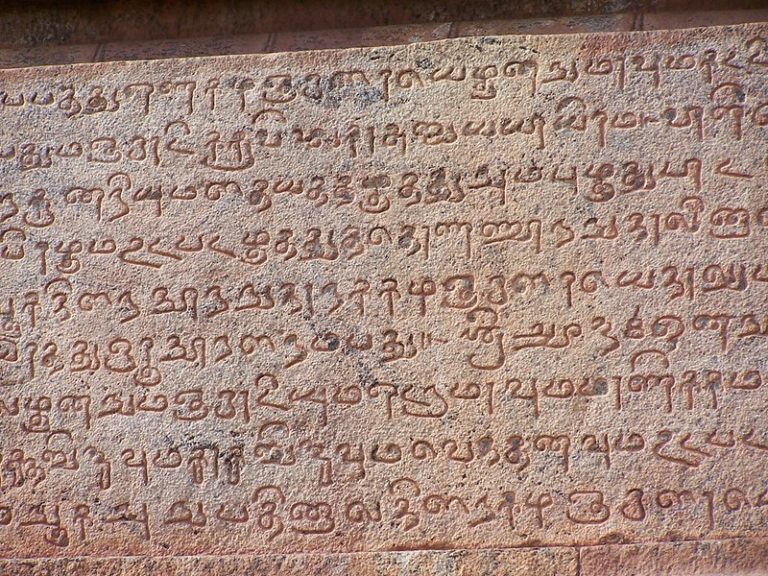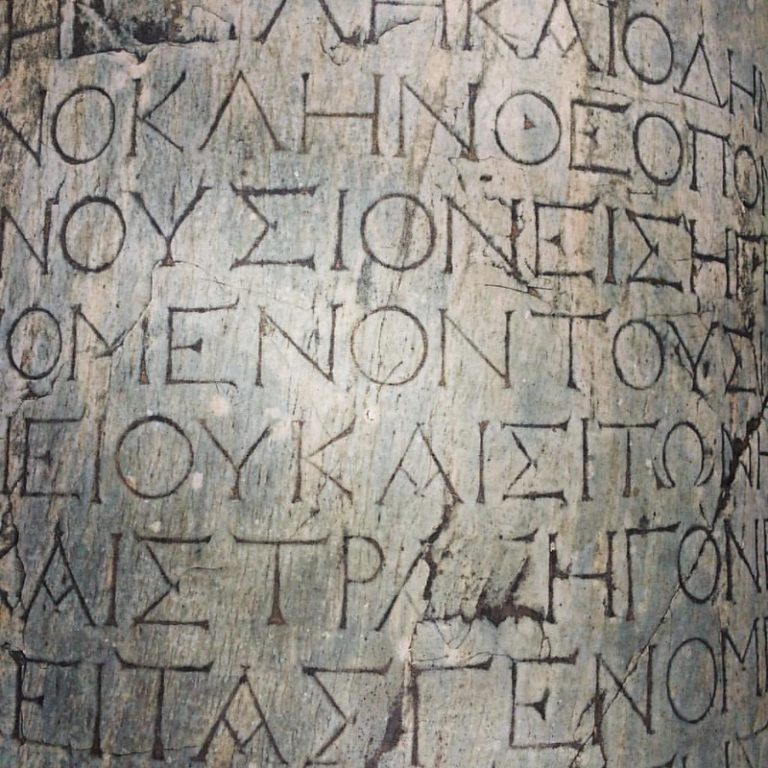There are almost 7000 languages spoken today around the world, However, 40% of these languages are now endangered. On the other hand, some of the oldest languages are still alive to our present day. As a matter of fact, you might be a native speaker or a learner of one of these ancient treasures.
Consequently, we will be listing 7 of the oldest languages in the world that managed to survive to our present day.
7. Tamil

There is a huge debate that Tamil is the earliest discovered language. It is the official language of South Asia and it is a member of the Dravidian language family. The latter includes a number of languages native mostly to southern and eastern India.
Also, it is also the official language of the state of Tamil Nadu, which is quite evident from the name of the region itself. Tamil is the classical language of India. What makes this language very interesting is that it crosses borders. Therefore, Tamil is also spoken in Sri Lanka and Singapore. Additionally, it has significant numbers of speakers in Malaysia, Mauritius, Fiji and South Africa.
With that in mind, 78 million people communicate each day using this language. Hence, that makes it one of the longest surviving languages and widely spoken ones in the world.
6. Farsi

Farsi, or as an known widely as Persian, is the contemporary language spoken in modern day Iran, Afghanistan and Tajikistan. However, it was historically more widely an understood language in an area ranging from the Middle East to India. It is called Fārsī by native speakers, it is written in a variety of the Arabic script called Perso-Arabic.
Total numbers of speakers is above 30 million.
5. Greek

The Greek language holds an important place in history thanks to its rich literature. It is best known as the language of Philosophers and Scholars. Additionally, Greek is also the language in which many of the fundamental works in astronomy, mathematics and philosophy are composed. Greek is an independent branch of the Indo-European family of languages, and it is the native language to Greece, Albania and South Cyprus.
Greek is spoken by more than 13 million people.
4. Hebrew

Hebrew belongs to the Canaanite group of languages which is a branch of the Northwest Semitic language native to Israel. It underwent a revival age in the 19th and 20th centuries and became the official language of the Jewish community and mainly the country of Israel. It is the language of the Bible, in which most of the Old Testament is written.
Around 9 million people speak Hebrew across the world.
3. Chinese

Along with Tamil, Chinese is one of the oldest surviving languages in the world. Chinese is also called Sinitic, Chinese Han, principal language group of eastern Asia, belonging to the Sino-Tibetan language family. The first written records appeared over 3,000 years ago during the Shang Dynasty. Chinese has many complex dialects.
About 1.2 billion people around the world speak a variety of Chinese as their first language.
2. Aramaic

The Aramaic is a Semitic language of the Northern Central class that was originally spoken by the ancient Middle Eastern people known as Aramaeans. This area is now, inhabited by Iraqi, Eastern Syrians, and Southeastern Turkish. Hebrew is also very close to Aramaic.
Aramaic includes many dialects, and they are very different from each other. The Aramaic that Jesus spoke was one of these dialects.
Today, almost 500,000 to 850,000 people speak Aramaic.
1. Arabic

Just like the Aramaic and Hebrew, the Arabic language is a Southern-Central Semitic language spoken in a large area including North Africa the Arabian Peninsula and the Middle East.
Arabic is the official language of 22 countries that form the Arab League.
There are more than 300 million Arabic speakers across the world.
Languages continue to evolve and change, however the roots are always evident in their structure. Therefore, languages are quite an important part of ecotourism as they are a fundamental unit of culture. Therefore, preserving languages is very similar to preserving nature, art, culture, tradition and much more.






